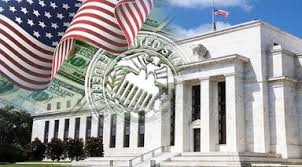Investors Hover at Fear-Greed Tipping Point, Index Stalls at 48
- The cryptocurrency Fear & Greed Index dropped to 48, remaining in the neutral range (0-100 midpoint), indicating balanced market sentiment. - Composed of six weighted metrics (volatility, volume, social media, etc.), it reflects collective trader psychology but lacks predictive power. - Analysts caution against relying solely on the index, as recent stability near 50 may precede significant market shifts when combined with macroeconomic factors. - Platforms emphasize the index serves only as an informati
The cryptocurrency Fear & Greed Index, a widely referenced sentiment indicator, currently stands at 48, according to recent data from Alternative. This level marks a decline from the previous day’s reading of 51, yet it remains within the “neutral” range of the index, which is defined as the midpoint of the 0-100 scale. The index is calculated using a composite of six key metrics, each weighted to reflect its influence on market sentiment: volatility (25%), market trading volume (25%), social media hype (15%), market surveys (15%), Bitcoin's dominance in the overall market (10%), and Google Trends analysis (10%).
The 50-point threshold holds particular significance for investors, as it is often used as a benchmark to gauge whether market conditions are skewed toward fear or greed. Readings below 50 suggest caution or fear among traders, while those above 50 indicate growing optimism or speculative enthusiasm. When the index is at 50, it signals a balanced market sentiment, which can be a critical juncture for decision-making. Investors often monitor movements around this level to anticipate potential turning points in market behavior.
Market analysts emphasize that while the Fear & Greed Index provides useful insights into collective trader psychology, it should not be used in isolation. Instead, it is best paired with other technical and fundamental indicators to form a more complete picture of market conditions. The index is not a predictive tool but rather a reflection of existing sentiment. As such, traders must remain cautious and not overreact to short-term fluctuations.
The latest weekly average of the index stands at 50, reinforcing the idea that the market has yet to move decisively toward either fear or greed. This stability could indicate a period of consolidation or uncertainty among investors, which may precede larger market movements. Historical data has shown that sustained periods around the neutral zone often precede significant directional shifts, particularly when combined with broader macroeconomic or regulatory developments.

Disclaimer: The content of this article solely reflects the author's opinion and does not represent the platform in any capacity. This article is not intended to serve as a reference for making investment decisions.
You may also like
The Fed’s hawkish rate cuts unveil the illusion of liquidity: the real risks for global assets in 2025–2026
The article analyzes the current uncertainty in global economic policies, the Federal Reserve's interest rate cut decisions and market reactions, as well as the structural risks in the financial system driven by liquidity. It also explores key issues such as the AI investment boom, changes in capital expenditures, and the loss of institutional trust. Summary generated by Mars AI This summary was generated by the Mars AI model, and the accuracy and completeness of its content is still undergoing iterative updates.

Cobo Stablecoin Weekly Report NO.30: Ripple's Comeback with a $40 Billion Valuation and the Stablecoin Transformation of a Cross-Border Remittance Giant
Transformation under the wave of stablecoins.

Bitrace's Perspectives and Outlook at Hong Kong FinTech Week
During the 9th Hong Kong FinTech Week, Bitrace CEO Isabel Shi participated in the Blockchain and Digital Assets Forum...
